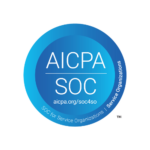Determining your healthcare development strategy can be complex and challenging, and it’s therefore vital to establish a process in order to improve the quality and efficiency of your interactions with a prospect. Every week, we’ll cover a new phase in our program to becoming a top producer in healthcare philanthropy.
Our key steps refer to the process development officers go through when interacting with each prospect. These steps are intended to be used as a guide to improve the quality and efficiency of every interaction with a prospect or donor. While some may move more quickly or slowly than others, all prospects go through each of the steps in the process. By being prepared and utilizing these steps, development officers can effectively reduce any tension between the officer and the prospect, sharpen communication skills, and generate a sense of professionalism and confidence. In the following blog series, Tips to Becoming a Top Producer in Healthcare Philanthropy, we will touch briefly on each of the key stages in the Gobel Group program, including pre-visit checklists and suggestions for talking points during each interaction, in order to assist development officers in aligning their prospects to the next stage, every time.
#1: Identifying Your Prospect
Since the Final Rules on HIPAA were released in January of 2013, health systems are now permitted to release not only a patient’s wealth indicators, but also his/her department of service, treating physician, and outcome information. This new data allows conversations and interactions regarding the identification of grateful patients to become much more substantive. With this in mind, it’s important to understand that identifying the best prospects requires a two-step process:
- Meaningfully engage medical staff in the philanthropic process. This is intended to make the staff more comfortable with the idea of referring the names of patients to the development office. Help them understand that philanthropy, for grateful patients, is less about writing a check than it is about feeling so grateful for the care provided that they are inclined to give back, thereby completing the circle of gratitude. We also offer customized trainings to assist clinicians in recognizing and understanding different levels of gratitude in their patients.
- Utilize a screening service to identify patients that have both wealth and gratitude indicators, based on their gifts to other organizations. Determine your threshold for major gift capacity, identify patients who meet the criteria, and share the list with your physician partners so that they may select patients who they believe are extraordinarily grateful for their care. At Gobel, we’ve developed Gratitude to Give (G2G), the only artificially intelligent algorithm built specifically to predict gratitude for nonprofit healthcare organizations.
Want to know more about becoming a top producer in healthcare philanthropy? Click here to read about the next stage, Introduction to Your Prospect.
